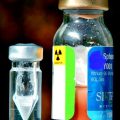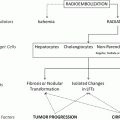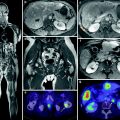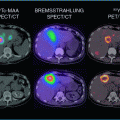Mandatory
Multidisciplinary team approach to reviewing liver cancer patients, including an interventional radiologist and at least three of
Hepatic surgeon
Medical oncologist
Radiation oncologist
Nuclear medicine physician
Pain physician or anesthetist
Gastroenterologist/hepatologist
Medical physicist/radiation safety officer
Dedicated oncology nursing staff
Established radiation safety, spill, contamination and disposal protocols
Triple phase CT, DSA, and gamma camera 99mTc MAA equipment
Desirable
Admitting and clinic rights for radiologists
On-site consultant medical physicist
Magnetic resonance imaging (MRI)
Single photon emission computed tomography (SPECT)
Positron emission tomography (PET)
Hybrid Imaging including PET-CT and PET-MRI
1.2 Radioembolization Team
According to the recommendations by the radioembolization brachytherapy oncology consortium (REBOC) (Kennedy et al. 2007), the team performing radioembolization should include individuals with sufficient expertise to:
1.
Care for the overall medical treatment of the cancer patient
2.
Perform vascular catheterization
3.
Perform and interpret radiologic scans
4.
Assume the responsibility for the delivery of the 90Y microspheres and be the authorized user
5.
Monitor radiation safety.
While the interventional radiologist is particularly responsible for the assessment and delivery of the 99mTc MAA angiography and radioembolization procedure, further care for the treated patients is usually assumed by the referring clinician or another designated member of the multidisciplinary team (Dezarn 2008).
Before SIRT, the technical complexity, the potential outcomes and complications of the diagnostic workup (99mTc MAA angiography) and the radioembolization procedure should be extensively explained to each patient in a dedicated counselling interview.
Furthermore, during this first clinical appointment the suitability and physical fitness of the patient should be evaluated. Referral for SIRT should never imply an obligation to treat the patient. At least 24 h prior to both the diagnostic 99mTc MAA angiography and the radioembolization procedure, patients’ written consent should be documented. After SIRT, each case should be reviewed again by the multidisciplinary team in order to inform the team members with respect to subsequent treatment decisions. Moreover, at discharge the patient should receive recommendations and information on further hydration and nutrition, peri-procedural medication, radiation safety instructions, the next necessary follow-up visits, and contact details in case of post-procedural side-effects.
2 Legal Regulations of Hospitals Performing Radioembolization
2.1 Legal Regulations
In most countries hospitals have to apply for a 90Y license with the appropriate authorities or professional bodies before initiating a SIRT program (Table 2). This license refers to the permission to store and dispose of 90Y in the hospital. In case 90Y isotopes are already used for other therapeutic purposes (e.g., 90Y radiosynoviorthesis) in the hospital, the 90Y license—if defined according to quantity—should be increased in addition to the amount of 90Y currently used in the department (e.g., 8-10 GBq daily, 15-20 GBq monthly).
Table 2
Hospital requirements for initiating a SIRT program
Country | 90Y Licence | Specific authority to use radioisotopes in the angiography suite |
|---|---|---|
Germany | x | x |
France | x | x |
UK | x | x |
Belgium
Stay updated, free articles. Join our Telegram channel
Full access? Get Clinical Tree
 Get Clinical Tree app for offline access
Get Clinical Tree app for offline access

|




